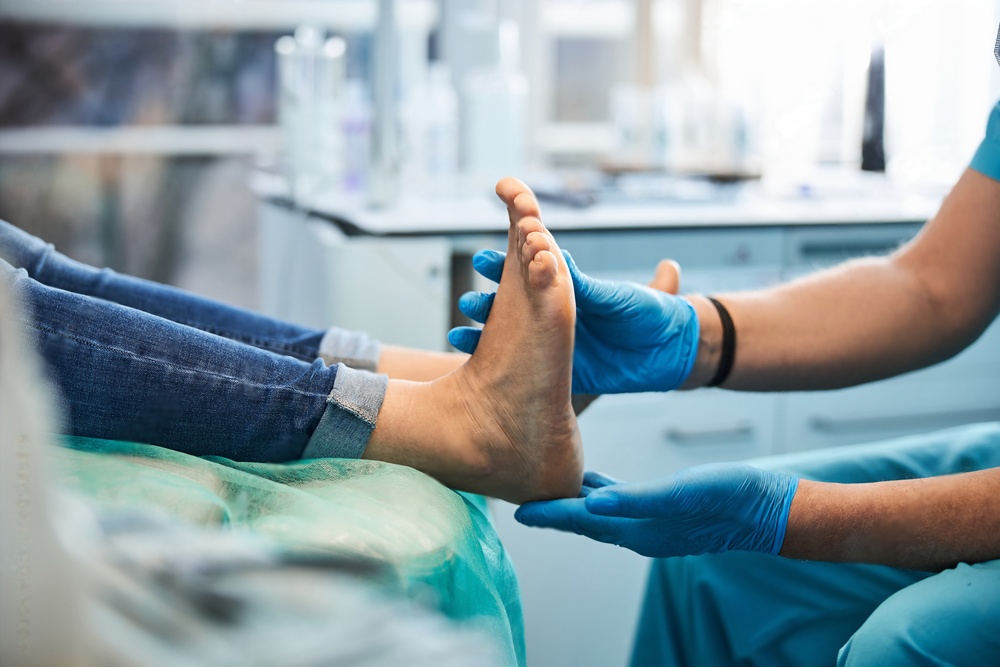Podiatrists in Salt Lake City: The Impact of Custom Orthotics

Podiatrists play a vital role in diagnosing various foot and ankle issues. But beyond that, they devise different treatment plans for such issues. One such treatment is custom orthotics. As a treatment option, custom orthotics stand out as an effective intervention for addressing various leg-related problems.
Thinking of getting orthotics? You’ll first need to understand the various types and their functions. Fortunately, this article explains all that in detail. It’ll also consider the difference between custom and over-the-counter orthotics.
Custom Orthotics for Individualized Care
Custom orthotics present a tailored solution for leg-related problems. Unlike over-the-counter inserts, custom orthotics are carefully designed after a comprehensive assessment conducted by a podiatrist.
A good podiatrist in Salt Lake City will first analyze your foot structure and gait patterns and any specific conditions or concerns you may have. Afterward, they’ll use advanced technology such as 3D scanning and gait analysis to craft custom orthotics that cater to your unique needs.
Understanding Different Types of Orthotics
Orthotics are specialized devices designed to support, align, or improve the function of the feet and lower limbs. Also called orthoses, these devices come in various types and serve different purposes.
Some of the common types of orthotics for leg and foot issues are:
#1. Functional Orthotics
Functional orthotics control abnormal foot motion, correct biomechanical issues, and improve overall foot function. They are typically made from semi-rigid or rigid materials and help to address conditions such as:
- Overpronation or Flat Feet
Functional orthotics provide arch support to correct collapsed arches or overpronation. This aids the realignment of the foot and ankle.
- Plantar Fasciitis
Functional orthotics can reduce strain on the plantar fascia by supporting the arch and redistributing pressure. This reduces the pain associated with plantar fasciitis.
#2. Accommodative Orthotics
The build of accommodative orthotics specifically aims to cushion and relieve pressure. It helps to alleviate discomfort caused by various conditions, including:
- Foot Deformities
These orthotics accommodate foot deformities by reducing pressure on sensitive areas. They provide cushioning and improve weight distribution. Examples of deformities that accommodative orthotics cater to are bunions or hammertoes.
- Arthritis
Individuals with arthritis benefit from accommodative orthotics. This is because they offer shock absorption and reduce stress on arthritic joints.
#3. Rigid Orthotics
Rigid orthotics use firm materials like plastic or carbon fiber. They control motion in specific joints and are the best fit for conditions such as:
- Severe Overpronation
Rigid orthotics provide maximum support and control excessive foot motion, especially in severe cases of overpronation.
- Leg Length Discrepancies
They can help compensate for differences in leg length. This is because they provide support and ensure proper alignment.
#4. Semi-Rigid Orthotics
Semi-rigid orthotics combine features of both functional and accommodative orthotics. They offer a balance of support and cushioning. As such, a foot doctor in Salt Lake City will recommend them for conditions such as:
- Sports Injuries
Athletes benefit from semi-rigid orthotics as they provide support and stability. They also ensure shock absorption during high-impact activities. This helps to reduce the risk of injuries.
- Joint Instability
Semi-rigid orthotics effectively manage joint instability by providing support and flexibility where needed.
Custom-Made vs. Over-the-Counter Orthotics
Custom-made orthotics are tailored to your foot structure and needs. This provides personalized support and correction for various foot conditions like plantar fasciitis.
In contrast, over-the-counter (OTC) orthotics are mass-produced, generic inserts available without a prescription. Consequently, they come in standard sizes and provide limited personalization. So, while OTC orthotics are more accessible and cost-effective, they lack the targeted correction of custom-made orthotics.
Certain factors generally influence the choice between the two – specific foot issues and cost considerations. Custom-made orthotics are ideal for addressing complex or chronic foot problems. On the other hand, OTC orthotics might suffice if you’re dealing with mild discomfort and want general support. Ultimately, it’s best to consult a podiatrist in Salt Lake City to determine the most suitable option.
Bottom Line
A foot doctor in Salt Lake City understands the role of custom orthotics in enhancing leg health. These specialized devices offer a non-invasive yet practical approach to managing and preventing leg issues. Through a combination of expertise and technology, Salt Lake City podiatrists have what it takes to provide solutions.
